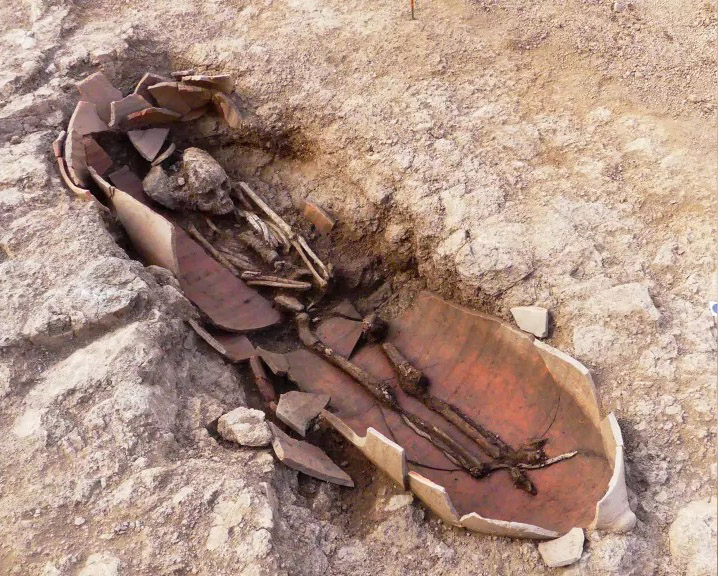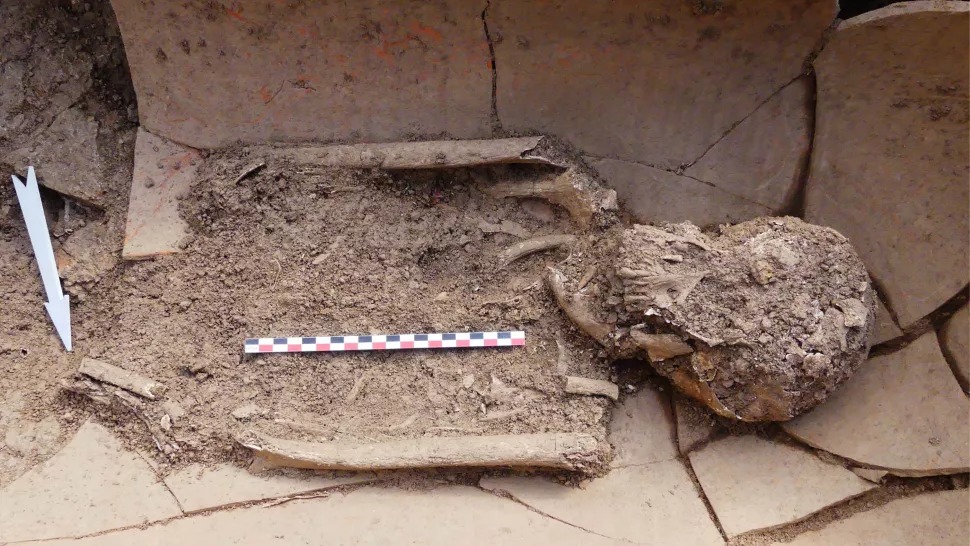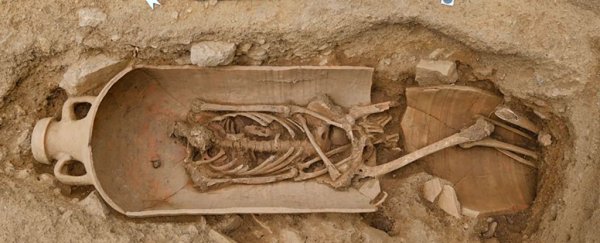An ancient necropolis with 40 tombs, including cylindrical jars filled with human remains, has been discovered on the French island of Corsica.
The people buried in the cemetery range from infants to adults, the archaeologists said. Located in the town of Île-Rousse on the island's northern coast, the cemetery seems to have been used between the third and fifth centuries CE, a time in which the Roman Empire was gradually declining.
Many of the people were found buried inside amphoras, large vessels that would normally be used to carry goods such as olive oil, wine or pickles. The design of the amphoras indicates that they are from North Africa, with some possibly being manufactured in Carthage.
 (Jean-Jacques Grizeaud/Île-Rousse)
(Jean-Jacques Grizeaud/Île-Rousse)
Even so, the people buried in the necropolis, including those inside the amphoras, likely lived near the necropolis in Corsica, said Jean-Jacques Grizeaud, an archaeologist at the French National Institute for Preventive Archaeological Research (INRAP) who led excavations at the site.
At the time, a lot of trade was happening across the Mediterranean, Grizeaud added.
Related: The 25 most mysterious archaeological finds on Earth
Archaeologists also found that some of the burials were covered with terra-cotta tiles that the Romans called "tegulae" and "imbrices". The Romans often used such tiles to cover the roofs of buildings and, at times, to cover burials.
The necropolis is located at the foot of the Immaculate Conception church constructed in 1893, the researchers said.
 The head of one of the people buried. (Jean-Jacques Grizeaud)
The head of one of the people buried. (Jean-Jacques Grizeaud)
Other burials found on the island, such as those at the sites of Mariana and Sant'Amanza, have been linked to buildings of worship, the researchers noted. More research needs to be done to determine what ancient towns or cities were located near this necropolis.
"There is no real mention of a city in the ancient texts or, for example, in the map of [Corsica] made by Ptolemy," a geographer who lived in the second century CE, Grizeaud said.
Over the next few months, archaeologists will conduct lab work to determine the people's sexes, their exact ages and any illnesses or injuries they may have had, Grizeaud said.
Related Content:
7 bizarre ancient cultures that history forgot
Photos: Island of the Druids overlooking the Irish Sea
30 of the world's most valuable treasures that are still missing
This article was originally published by Live Science. Read the original article here.
